Implant Retained Dentures
Replacing missing teeth with implant retained dentures
Usually, when you lose a tooth, it is best for your oral health to have it replaced. Missing teeth can affect your “bite” as well as your ability to speak and chew. Their loss can increase the burden on your remaining teeth and can cause muscle pain in your jaws and headaches. And of course, losing a tooth can affect your appearance. The following information reviews replacing missing teeth with an implant retained denture.
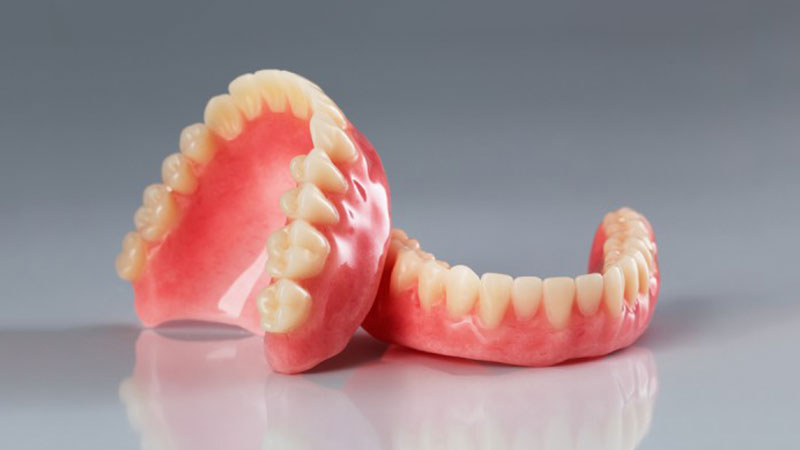
The first option is to have two implants placed in your lower jaw and a denture made that snaps onto these implants. This option allows your lower denture to be more stable while chewing than without implants. This is a viable option if your jaw’s support ridge is big enough. There will still be movement of your lower denture, however, and you can still get sore spots if any food particles, especially seeds, are caught under it. As with all removable replacement teeth, you will still need periodic appointments for denture adjustment.
A second option involves placing four to six implants, depending on your jaw size or shape, into your lower jaw. After healing is complete, the implants are connected with a custom-made support bar. Your denture will be made with special retention clips inside that attach onto the support bar, allowing the denture to snap firmly into place. This is called an overdenture. The advantage of this option is that it is much more stable than the first option, allowing very little denture movement. Your denture still will be removable for easy cleaning and maintenance.
A third option involves placing five or more implants in your jaw and attaching a permanent denture. Your denture is held in place by screws or clasps that secure it to the support posts or bar. It doesn’t touch the gum tissue, which allows you to clean under the denture without removing it. This denture will replace all your missing lower teeth and will not be removed except at maintenance visits. Although cleaning under your denture without removing it is more time consuming and requires more dexterity, many patients who want permanent teeth prefer this option.
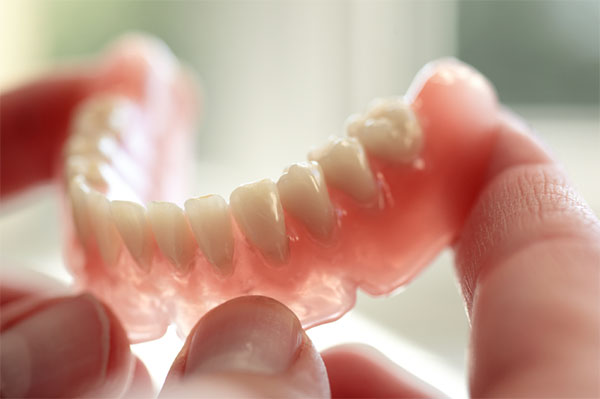
IMPLANT BENEFITS
PARTIAL & FULL DENTURES (TRADITIONAL)
A denture is a removable dental appliance replacement for missing teeth and surrounding tissue. They are made to closely resemble your natural teeth and may even enhance your smile.
There are two types of dentures – complete and partial dentures. Complete dentures are used when all of the teeth are missing, while partial dentures are used when some natural teeth remain. A Partial denture not only fills in the spaces created by missing teeth, it prevents other teeth from shifting.
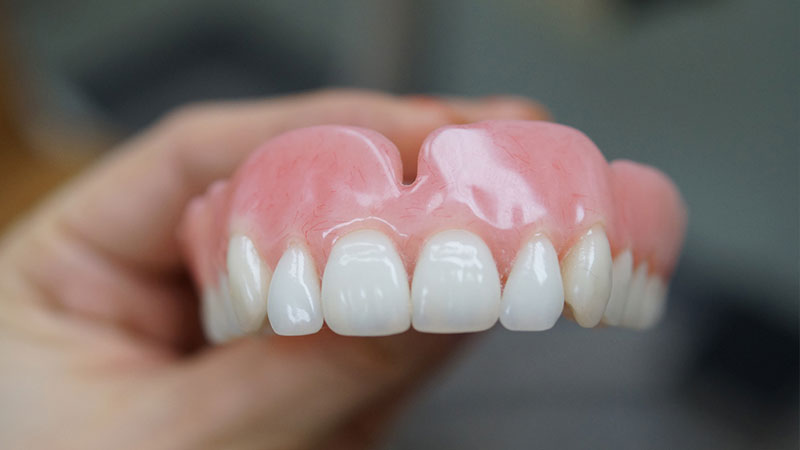
A Complete denture may be either “conventional” or “immediate.” A conventional type is made after the teeth have been removed and the gum tissue has healed, usually taking 4 to 6 weeks. During this time the patient will go without teeth. Immediate dentures are made in advance and immediately placed after the teeth are removed, thus preventing the patient from having to be without teeth during the healing process. Once the tissues shrink and heal, adjustments will have to be made.
Dentures are very durable appliances and will last many years, but may have to be remade, repaired, or readjusted due to normal wear.
REASONS FOR DENTURES
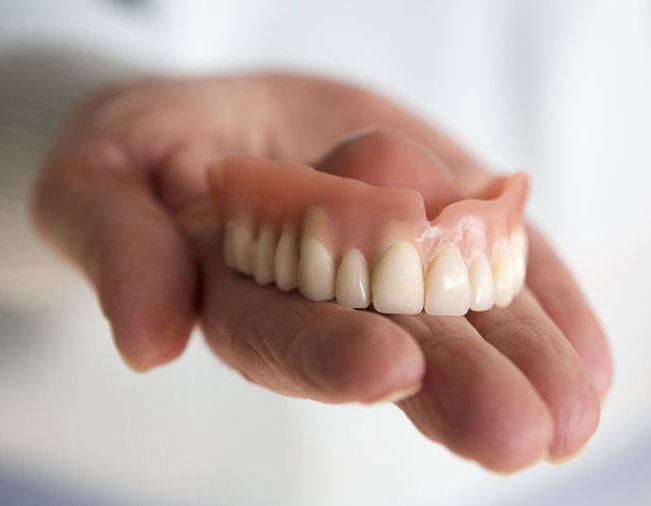
What Does Getting Dentures Involve?
The process of getting dentures requires several appointments, usually over several weeks. Highly accurate impressions (molds) and measurements are taken and used to create your custom denture. Several “try-in” appointments may be necessary to ensure proper shape, color, and fit. At the final appointment, your dentist will precisely adjust and place the completed denture, ensuring a natural and comfortable fit.
It is normal to experience increased saliva flow, some soreness, and possible speech and chewing difficulty, however this will subside as your muscles and tissues get used to the new dentures.
You will be given care instructions for your new dentures. Proper cleaning of your new dental appliance, good oral hygiene, and regular dental visits will aid in the life of your new dentures.
PARTIAL DENTURES
While dental implants are the most effective way to replace missing teeth, everyone is not a candidate for them. Or they might not be within your budget. One alternative that Dr. Gruber offers is removable partial dentures.
These dentures are made with replacement teeth that are embedded in a gum-colored base that is attached to a metal or gum-colored framework. The framework has clasps to secure it around your teeth.
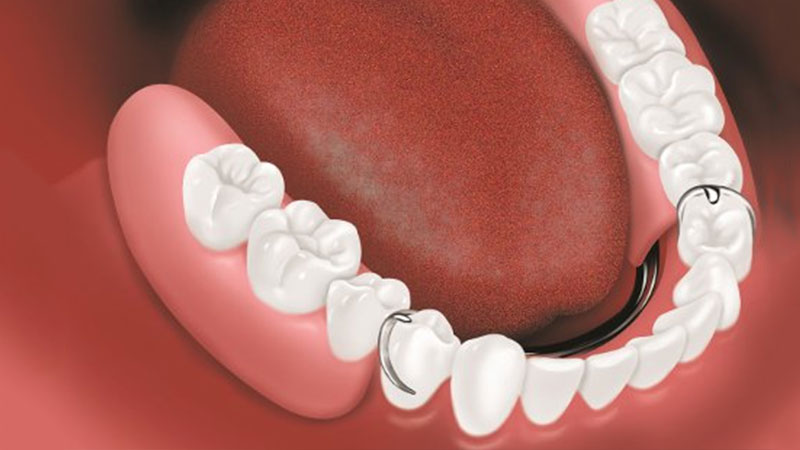
The advantages of this appliance are that it can replace multiple teeth and it is less expensive than a dental bridge. The disadvantages are that it is not as stable as a dental bridge or implant, the hardware can be somewhat uncomfortable, and if the framework is metal, it won’t be completely concealed.
The precision attachment partial differs from the traditional partial denture in that the metal framework is not visible. Extensions from the framework interlock with a receiving area that has been specifically made for it on crowns or bridgework.
This partial denture looks and feels better than the traditional one, and the clasps are virtually invisible. But it is more expensive than the traditional partial denture. And it’s less stable than dental implants and a dental bridge.
This is the least expensive partial denture. An impression of your mouth is taken to make a gum-colored acrylic plate. An acrylic tooth that is close to the color of your natural teeth is attached to it. At an additional cost, metal wires can be attached to the dental flipper, so that it can be secured to your teeth.
The dental flipper is a temporary tooth replacement. It breaks easily, so it needs to be removed when you eat. And it is not healthy for your gums if it’s worn for an extended period.
If you need a removable partial denture, Dr. Gruber can provide you with one that fits well, and that is natural looking. As prosthodontist, he has received post-graduate training in tooth replacement. In fact, Dr. Gruber is an American Board-certified prosthodontist and fellow of the American College of Prosthodontists and the International Congress of Oral Implantologists, all of which required extensive written and oral examinations, along with submission of patient cases and treatment to demonstrate his knowledge and skill in the specialty.
Call our office to schedule an appointment, or request an appointment online. Or, if you would like to ask a few questions and discuss your options first, request a complimentary consultation, which includes an exam and a panoramic x-ray.
Schedule a Visit

